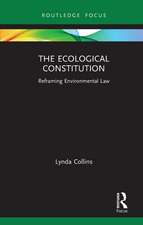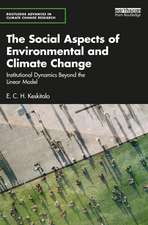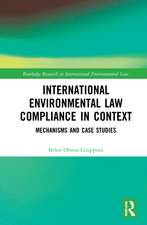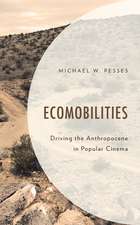Happy City - How to Plan and Create the Best Livable Area for the People: EcoProduction
Editat de Anna Brdulak, Halina Brdulaken Limba Engleză Hardback – 10 mar 2017
| Toate formatele și edițiile | Preț | Express |
|---|---|---|
| Paperback (1) | 1000.70 lei 43-57 zile | |
| Springer International Publishing – 20 iul 2018 | 1000.70 lei 43-57 zile | |
| Hardback (1) | 1006.87 lei 43-57 zile | |
| Springer International Publishing – 10 mar 2017 | 1006.87 lei 43-57 zile |
Din seria EcoProduction
- 18%
 Preț: 999.60 lei
Preț: 999.60 lei - 15%
 Preț: 637.59 lei
Preț: 637.59 lei - 15%
 Preț: 644.18 lei
Preț: 644.18 lei - 24%
 Preț: 1137.30 lei
Preț: 1137.30 lei - 18%
 Preț: 783.81 lei
Preț: 783.81 lei - 18%
 Preț: 963.47 lei
Preț: 963.47 lei - 19%
 Preț: 554.19 lei
Preț: 554.19 lei - 15%
 Preț: 637.59 lei
Preț: 637.59 lei - 18%
 Preț: 964.71 lei
Preț: 964.71 lei - 15%
 Preț: 645.28 lei
Preț: 645.28 lei - 15%
 Preț: 643.48 lei
Preț: 643.48 lei - 18%
 Preț: 946.55 lei
Preț: 946.55 lei - 20%
 Preț: 644.48 lei
Preț: 644.48 lei - 15%
 Preț: 644.18 lei
Preț: 644.18 lei - 15%
 Preț: 590.30 lei
Preț: 590.30 lei - 18%
 Preț: 722.75 lei
Preț: 722.75 lei - 18%
 Preț: 944.36 lei
Preț: 944.36 lei - 15%
 Preț: 641.53 lei
Preț: 641.53 lei - 15%
 Preț: 646.30 lei
Preț: 646.30 lei - 15%
 Preț: 646.11 lei
Preț: 646.11 lei - 18%
 Preț: 945.79 lei
Preț: 945.79 lei - 15%
 Preț: 640.71 lei
Preț: 640.71 lei - 18%
 Preț: 785.86 lei
Preț: 785.86 lei - 18%
 Preț: 999.60 lei
Preț: 999.60 lei - 15%
 Preț: 644.95 lei
Preț: 644.95 lei - 18%
 Preț: 788.41 lei
Preț: 788.41 lei - 15%
 Preț: 646.94 lei
Preț: 646.94 lei - 24%
 Preț: 783.26 lei
Preț: 783.26 lei -
 Preț: 389.11 lei
Preț: 389.11 lei
Preț: 1006.87 lei
Preț vechi: 1227.88 lei
-18% Nou
Puncte Express: 1510
Preț estimativ în valută:
192.73€ • 209.41$ • 161.99£
192.73€ • 209.41$ • 161.99£
Carte tipărită la comandă
Livrare economică 21 aprilie-05 mai
Preluare comenzi: 021 569.72.76
Specificații
ISBN-13: 9783319498980
ISBN-10: 3319498983
Pagini: 310
Ilustrații: XIV, 318 p. 54 illus., 36 illus. in color.
Dimensiuni: 155 x 235 x 19 mm
Greutate: 0.64 kg
Ediția:1st ed. 2017
Editura: Springer International Publishing
Colecția Springer
Seria EcoProduction
Locul publicării:Cham, Switzerland
ISBN-10: 3319498983
Pagini: 310
Ilustrații: XIV, 318 p. 54 illus., 36 illus. in color.
Dimensiuni: 155 x 235 x 19 mm
Greutate: 0.64 kg
Ediția:1st ed. 2017
Editura: Springer International Publishing
Colecția Springer
Seria EcoProduction
Locul publicării:Cham, Switzerland
Cuprins
Part I Sustainable Urban Mobility:Sustainable Mobility in Smart Metropolis.- Fair access to city space – establishing principle.- Enterprise Architecture-based model of management for smart cities.- The impact of novel, innovative architectural information systems using balloon technology on public understanding of air quality in urban areas, with specific regard to transport-related decisions.- Part IIBuilding social capital – citizen focus: Satisfaction benchmark for smart cities.- Role of public government units within the framework of the smart city concept.- Quality of Life and Gender Equality: some conclusions from a public opinion poll in Poland.- The analysis of quality of life – the case of Warsaw.- Aiming to a Future University – the case of the SGH campus redevelopment.- Part III Integrated Infrastructures and processes across Energy, ICT and Transport.- Integrated Infrastructures and processes across Energy, ICT and Transport.- Lessons from a Large Scale Demonstrator of the Smart and Sustainable City.- Mobility Oriented Development (MOD): Public-Private Partnership in Urban Parking & Traffic Management with the Use of Autonomous Automobiles, Car-sharing, Ridesharing Modes of Transport & Mobility as a Service (MaaS).- Eco-innovations in sustainable waste management strategies for smart cities.- Part IV Policy and regulations: Smart city landscape protection – EU law perspective.- The legal aspects of intelligent cities.- City debugged. How to reform Polish cities so they thrive socially and facilitate sustainable growth?.- Exploring public attitudes towards urban access regulation schemes – case of Maribor
Textul de pe ultima copertă
This book presents multi-sector practical cases based on the author’s own research. It also includes the best practice, which could serve as a benchmark for the creation of smart cities. The global urbanisation index, i.e., the ratio of city dwellers to the total population, has been steadily increasing in recent years. It is highest in the Americas, followed by Europe, Asia and Africa. The city of the future will combine the intelligent use of IT systems with the potential of institutions, companies and committed, creative inhabitants. The administrative boundaries of today’s cities put certain constraints on their further growth, but in the future these boundaries will no longer be as relevant. Cities in Europe face the challenge of reconciling sustainable urban development and competitiveness – a challenge that will likely influence issues of urban quality such as the economy, culture, social and environmental conditions, changing a given city’s profile as well as urban quality in terms of its composition and characteristics.
Caracteristici
Presents multi-sector practical cases based on the author’s own research Includes the best practice, which could serve as a benchmark for the creation of smart cities Outlines the main problems with current approaches toward a smart city concept Includes supplementary material: sn.pub/extras























